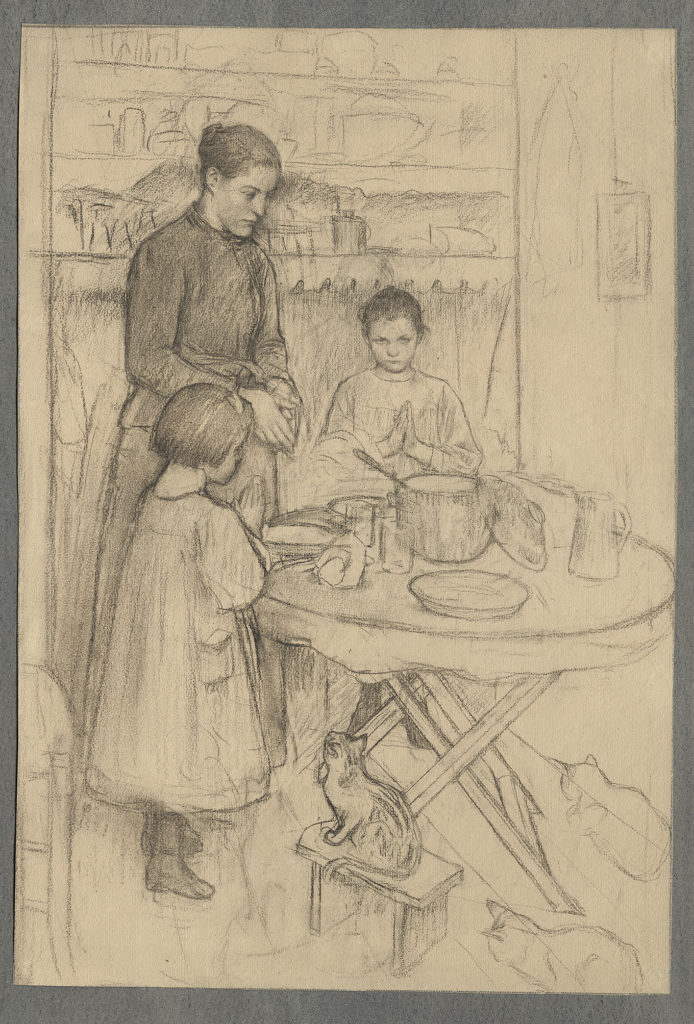A lovely composition of Henri Royer’s most personal subject: the Breton religious life.
Royer first studied in Nancy, and then between 1888 and 1890 at the Académie Julian in Paris. In 1896, he travelled for the first time to Brittany, and then returned regularly in the region of Finistère, where he dedicated his art depicting customs of the people of Cap-Sizun. Later, living in the Breton town of Audierne, he painted the inhabitants of small islands off the western tip of Brittany, where he found a population completely isolated from the rest of the world, keeping alive the old Breton traditional and singular way of life, and most notably their religious customs. Many important Royer’s compositions were dedicated to this, such as the superb Ex-voto now in Quimper (Musée des Beaux-Arts), measuring more than two meters high.
The Blessing seems to be a preliminary drawing for the painting of the same title, presented in 1899 at the Salon de la Société des artistes françois, and bought at the Salon by the French State. It is now in the collection of the Musée d’Orsay, and on permanent loan at the Musée des Beaux-Arts in Nancy. In both compositions, a family is gathered around the table and blessing the meal in front of them. The mother and children are standing up, as the man on the painting is the only one seated (he is absent on the present drawing). The figure of the woman is reinforced and dominating: in the painting, she is the tallest, as in the drawing, her black dress pointed her out. In traditional societies like in Brittany, the mother was the keeper of the family, of its private and sacred aspects. She took care of the meal, and managed the blessing too.
The originality of this drawing is the intimate setting. Contrary to most of Royer’s paintings situated in churches, chapels or processions, this family is at home. Amazingly, the mother and the girl in the centre are praying with their eyes open. In a certain way, it seems that the absence of the father is the central topic of the composition. Most Breton men were fishermen and at sea for long time. Royer might have represented a woman worried about her man, and a little girl annoyed about her father’s departure.
It is worth mentioning the distinguished provenance. Jean-Baptiste Eugène Corbin (1867-1952) was an artiste-amateur, a sportsman, ad a great sponsor of the Art Nouveau from the Ecole de Nancy (Majorelle, Prové etc.), and an avid collector of artists from Nancy, including Royer. A large part of his painting collection has been donated by him to the City of Nancy, before the WWII. See Philippe Bouton-Corbin, Eugène Corbin : collectionneur et mécène de l’École de Nancy, président des Magasins Réunis-Est, inventeur du camouflage de guerre, Association des amis du musée de l’École de Nancy, Nancy, 2002.







